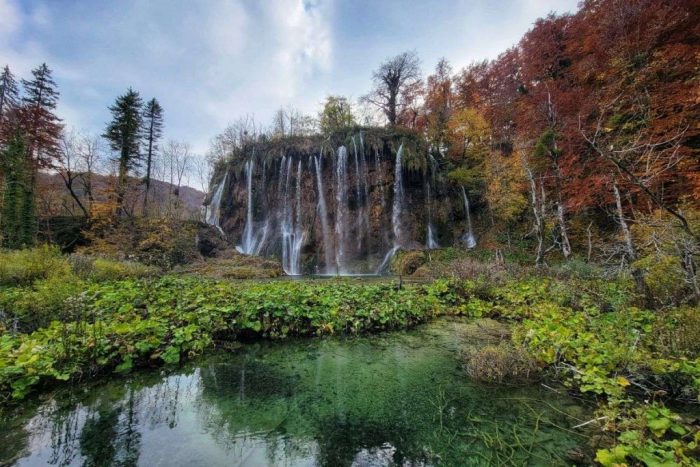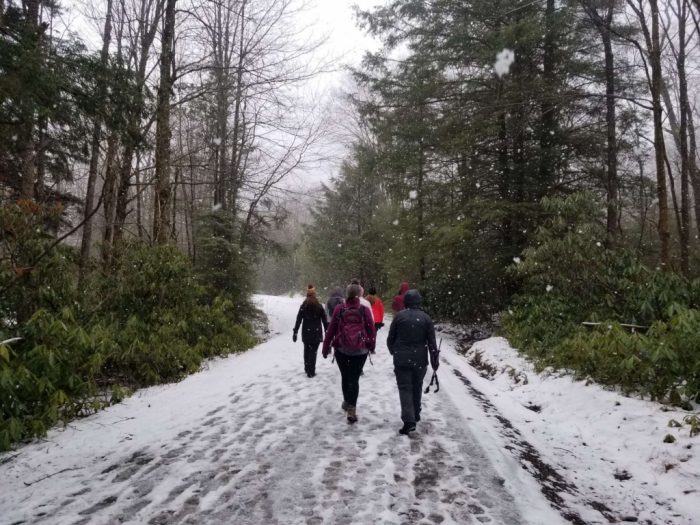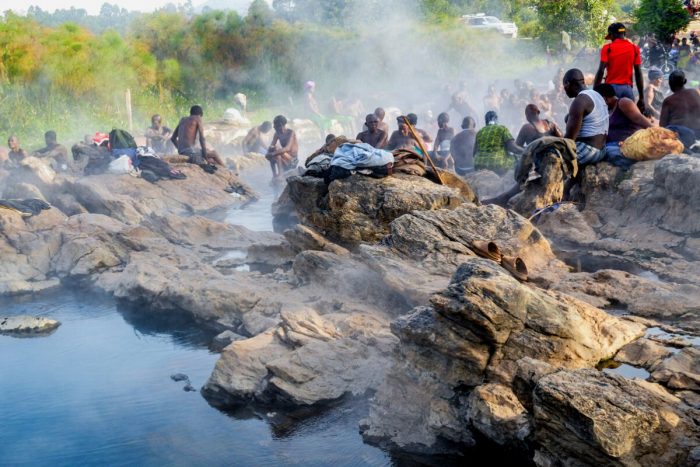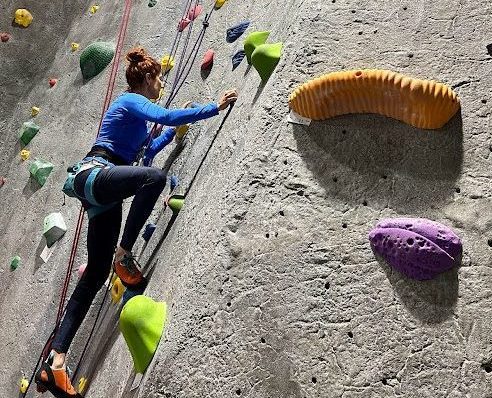You Have To Visit These Must-See Glaciers in Alaska
Glaciers and glacial ice cover 10 percent of the Earth’s land area, storing nearly 70 percent of freshwater on the planet. Alaska is one of the BEST places to get up close and personal with the true majesty of these incredible frozen formations.
If you don’t picture glaciers when you think of Alaska, it’s probably a sign you need to get your butt there to see them for yourself! The Last Frontier state is home to over 100,000 glaciers covering around 30,000 square miles of its landscape, and many of them are accessible by land, air, boat, or on foot!
Best Glaciers Near Anchorage
While there are literally thousands of glaciers to choose from, Alaska is HUGE and largely wilderness. There are still plenty of accessible glaciers to visit though! Some of the most popular glaciers can be found within less than 50 miles of Anchorage.
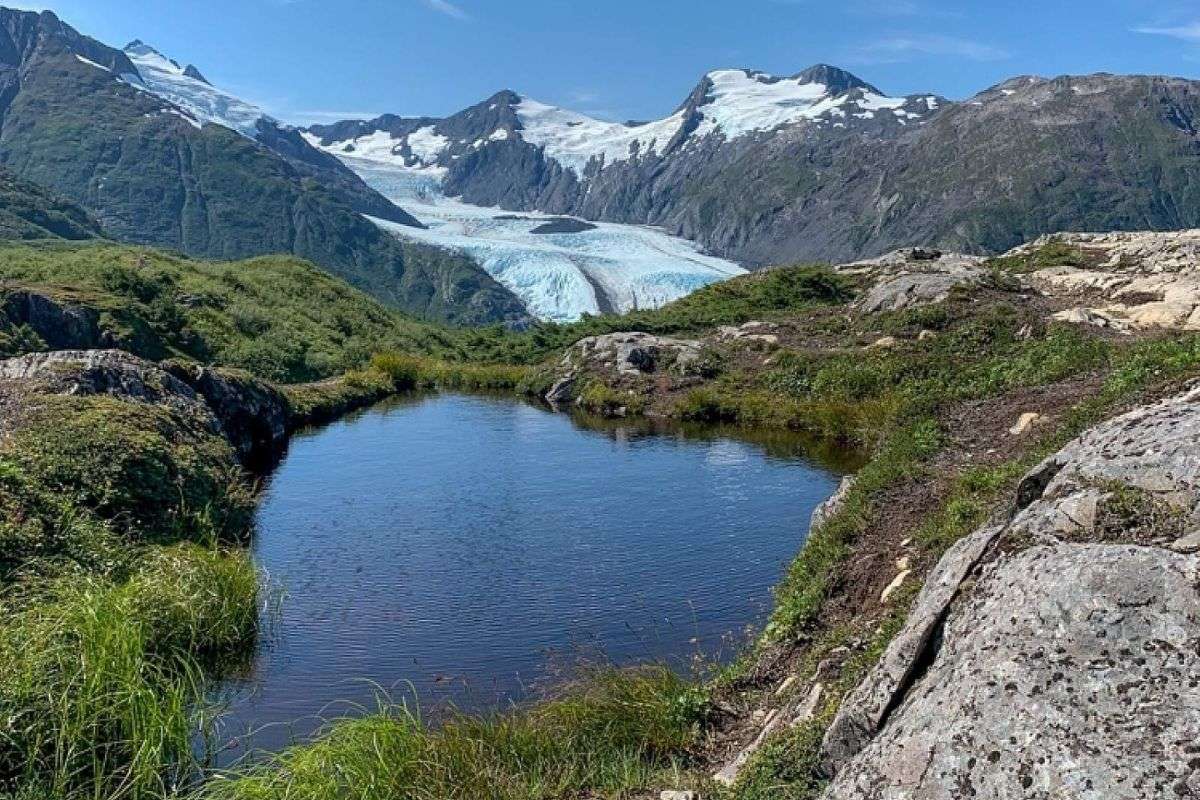
Portage Glacier
Where to find it: 60.7531° N, 148.7856° W
Glacier highlights: 48 miles south of Anchorage, Portage is a mountain glacier over 6 miles long and half a mile wide. This ice formation is just over 100 years old.
Where to stay: Whittier, AK
Who this is for: Those who want to get close to multiple Alaskan glaciers without slipping on the ice.
Portage Glacier sits at the far end of Portage Lake towering over the wild Portage Valley. It’s accessible by boat tour in the summer months, where a forest ranger will guide you and provide information on the geology, wildlife, and history of Alaska’s glaciers, including nearby Byron Glacier.
When conditions are right, you can get up close to the glacier face, but hiking the on foot glacier requires Portage Lake to be completely frozen over. The family-friendly hiking trails to Portage Glacier are no longer than 4 miles round trip, and start at the far end of the Whittier Tunnel.
Portage Glacier is a great option to choose-your-own-adventure, letting you decide between spectacular glacier views from the comfort of a boat or the thrill of getting up close and personal with this iconic hunk of ice.
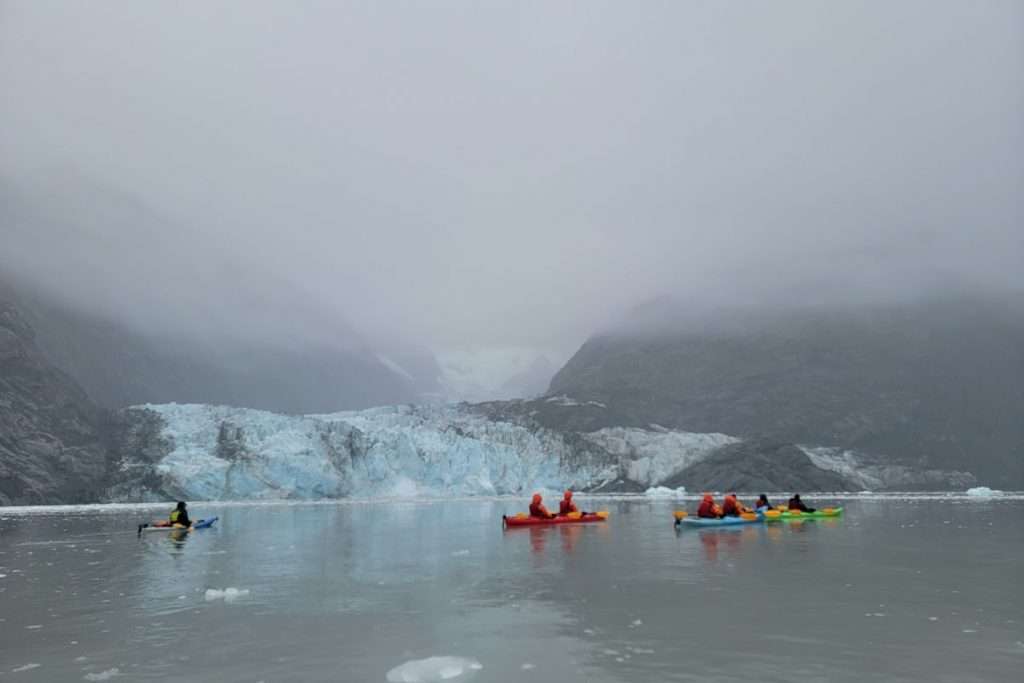
Columbia Glacier
Where to find it: 60.9903° N, 147.0678 ° W
Glacier highlights: One of the most rapidly changing glaciers in the world, Columbia Glacier descends from an ice field 10,000 feet above sea level into Prince William Sound.
Where to stay: Valdez, AK
Who this is for: Those who want a mix of leisure and an opportunity for EPIC
Located in the Chugach Mountains, Columbia Glacier is the largest of these incredible ice formations in the Prince William Sound and the second largest tidewater glacier in North America. Tidewater glaciers are glaciers that form when snow melts and flows toward the sea. Their main method of ice loss is through iceberg calving, or icebergs falling into the sea, as opposed to surface melt like other types of glaciers.
Views of the glacier can be seen by visitors on boat tours, helicopter rides, another plane flightseeing tour, or kayak tours where you might paddle past Alaskan harbor seals. According to scientists, Columbia Glacier has been rapidly retreating since the 1980s. In that time its volume has shrunk by more than half, and the glacier has retreated more than 10 miles.
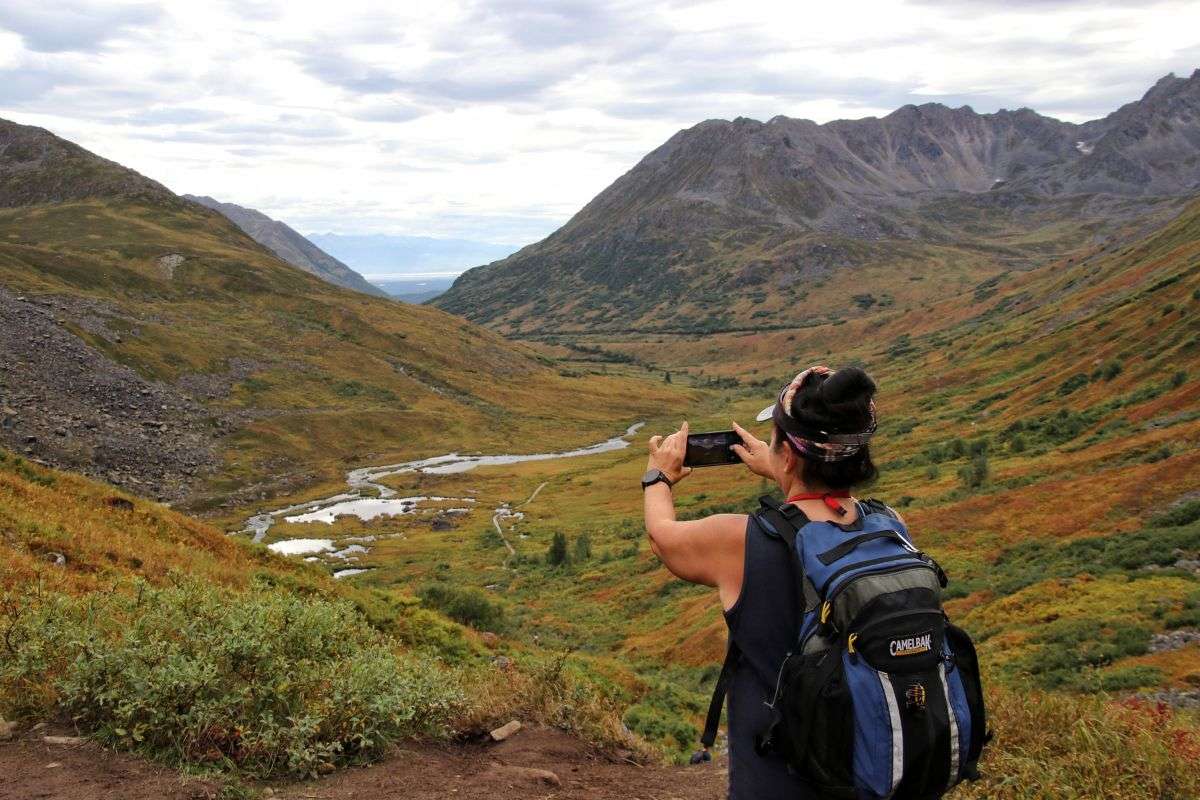
Worthington Glacier
Where to find it: 61.1703° N, 145.7633° W
Glacier highlights: A 600-mile round trip drive from Anchorage, Worthington Glacier is a tidewater glacier that melts and flows into the Tsina River.
Where to stay: Valdez, AK
Who this is for: Road trip lovers and those who want drive-up access to an epic tidewater glacier
Another one of Alaska’s glaciers that’s easily accessible for those who want those epic views without having to make the trek into Alaska’s remote national parks, Worthington Glacier is located in an area known as Thompson’s Pass about 28 miles north of the town of Valdez.
Worthington is a valley glacier and has an area of 5,774 acres and is over 4 miles long. It’s located within the Worthington Glacier State Recreation Park. All of the hikes to this glacier are off-trail and require good navigating abilities. Consider joining a guided group tour to see this famous Alaskan landmark!
Best Hiking Glaciers in Alaska
We mentioned there were 100,000 glaciers in Alaska, right? You’d need some serious hutzpah to visit them all, and some are better admired from afar. But what about actually getting ON some glaciers? These are some of the best glaciers in Alaska for trekking on your own two feet.
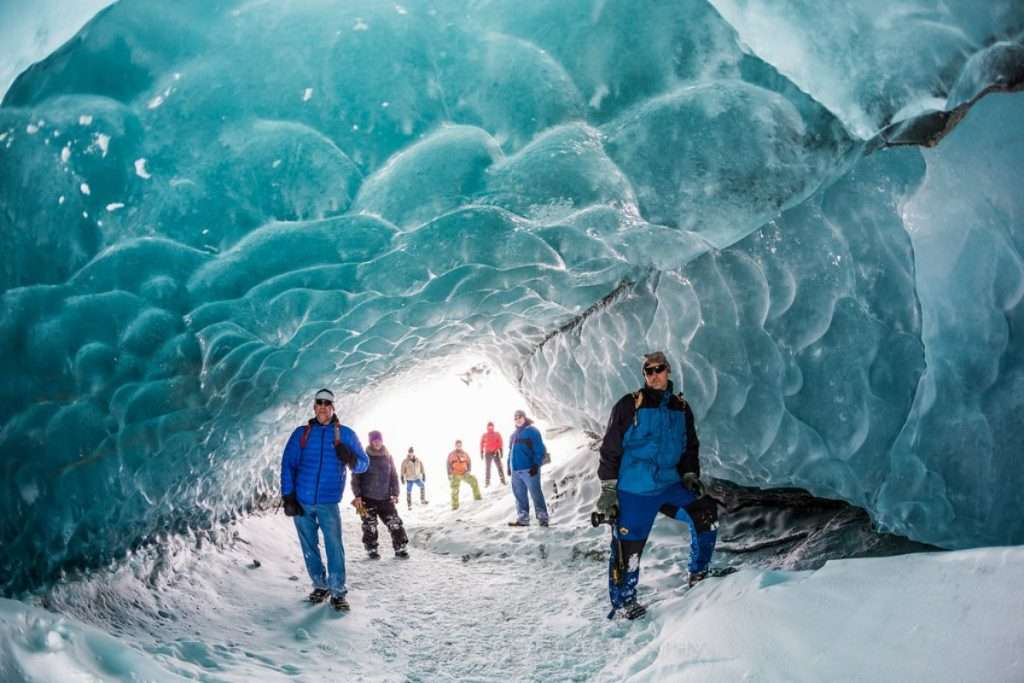
Matanuska Glacier
Where to find it: 61.6558° N, 147.5811° W
Glacier highlights: 27 miles long and 4 miles wide, Matanuska Glacier is the largest glacier accessible by car in all of the U.S.
Where to stay: Glacier View, AK
Who this is for: Adventure seekers who want to drive right up to a glacier!
While Matanuska Glacier is accessible year round, it can only be visited by joining a guided tour. Its location makes this glacier one of the most popular roadside attractions along the Glenn Highway, which is filled with amazing views and epic vistas around every corner on its own. Since it’s so easy to get to, Matanuska is one of the best glaciers for hiking in Alaska.
Matanuska Glacier is located in the Chugach National Forest, around 100 miles or about a 2-hour drive from Anchorage. If Anchorage is your homebase, then after a helicopter tour over the city or kayaking the Kenai Fjords, then you can easily drive out to climb the Matanuska Glacier.
The sheer size of it makes it AMAZING to see from the roadside, but it’s well worth the small fee to access the private land the glacier sits on and really get to explore some ice.
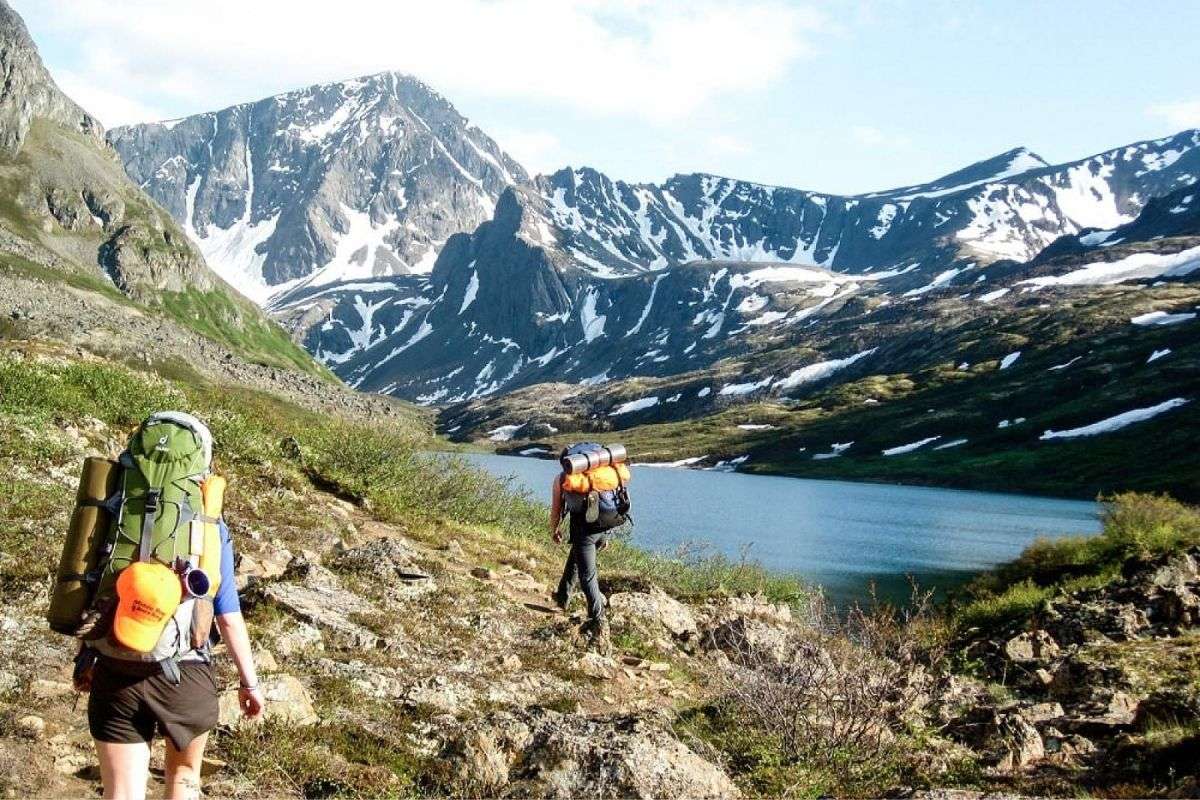
Kennicott Glacier
Where to find it: 61.6003° N, 143.0697° W
Glacier highlights: Located within Wrangell St. Elias National Park spanning 13.2 million acres, Kennicott Glacier is a large compound valley glacier and one of only a few in Alaska that can be seen from the road.
Where to stay: McCarthy, AK or Kennicott, AK
Who this is for: Those who want the option to see the glaciers from right in town, or to hike yourself across it for a more intimate experience on glacier ice.
Views of Kennicott Glacier can be seen from dozens of view points close to the town of McCarthy, and especially from the Kennecott Visitor Center. It’s run by the National Park Service and located in the old Blackburn Schoolhouse within the historic Kennecott Mill Town.
What’s unique about Kennicott Glacier goes beyond the surface. At first glace it may seem like this glacier is lacking something major — ICE! The rock debris and brown terrain is just one layer of this glacier that sit atop hundreds of feet of solid ice. This unique glacier landscape will make you feel like you’re trekking across the moon!
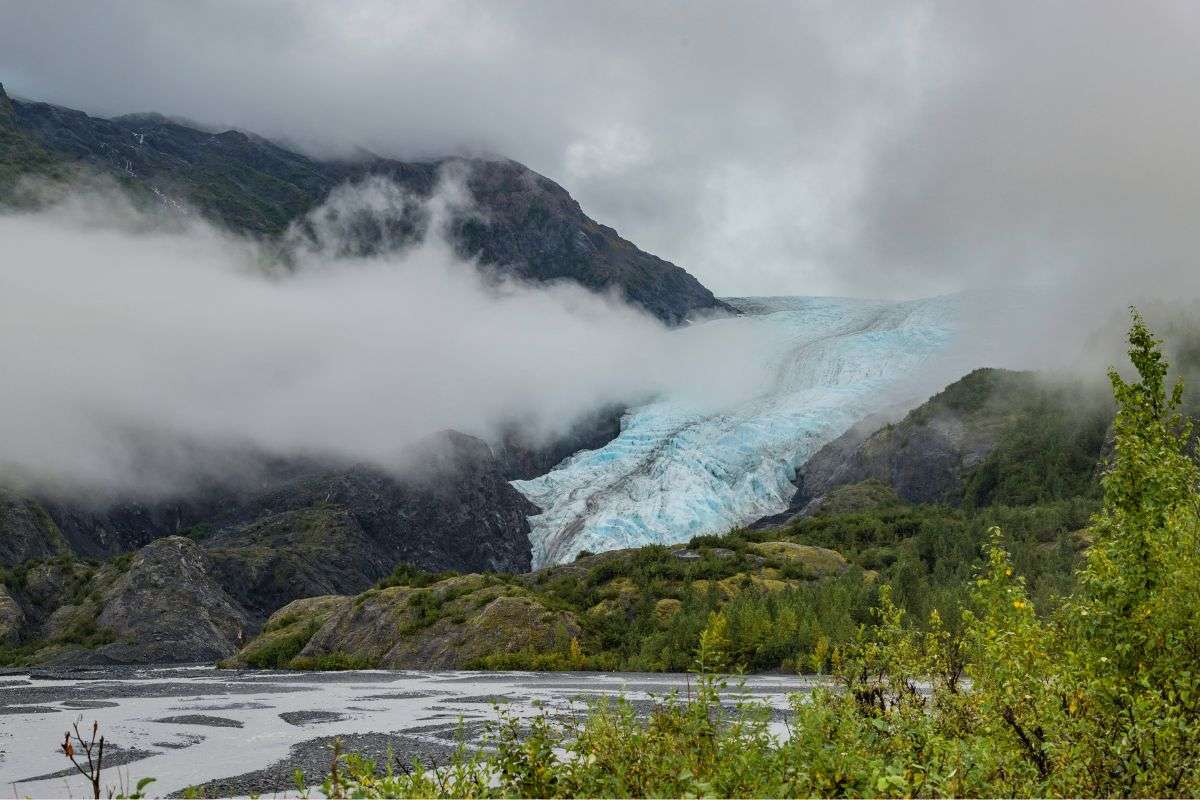
Exit Glacier
Where to find it: 60.1784° N, 149.6494° W
Glacier highlights: One of the most popular glaciers easily accessible from the road in Alaska, you can walk to Exit Glacier in just about 30 minutes on well-marked and well-loved trails.
Where to stay: Seward, AK
Who this is for: The adventurous who aren’t afraid of a challenge
Exit Glacier is one of the most popular road-accessible glaciers in the state at the base of the Kenai Mountains. In fact, you can walk almost right up to the face of it in 30 minutes, by way of the Edge of the Glacier Trail. The good trail system is easy to navigate and provides tons of opportunities with good footing to hike along the glacier. Just off Seward Highway about 15 miles outside town. Don’t miss the guide along the trails detailing the rapid changes in plant life and geology around Exit Glacier over the last 120 years.
Looking for a little more of a glacier hike? Climb the epic Harding Icefield Trail up another 4 miles and 3,500 feet. Partially located in Kenai Fjords National Park, where you’ll get even more breathtaking views of the Glacier, Seward, and the coastline dotted with floating ice and even more tidewater glaciers.
What You Should Know Before Hiking A Glacier In Alaska
Hiking one or two glaciers is a little different than lacing up for a typical trail. Factors that you typically consider for hiking are much more extreme in Alaska, from weather and terrain to equipment and accessibility. You might not always be driving right up to the trailhead and setting off in your trail runners!
Best Time to Visit Alaska
Some of the most famous glaciers in Alaska for hiking are best accessed in the warmer months from May to September, including favorites like Spencer Glacier, McBride Glacier, Raven Glacier, Hubbard Glacier, and Holgate Glacier. This is also the best time of year for weather conditions overall, not just snow. The shoulder months in spring and fall often have opportunities for epic adventures at lower costs than the high season.
Depending on the experience you’re looking to have in Alaska, you may even consider a visit outside these months. Certain areas are only accessible for ice climbing or glacier hiking when conditions are a little chilly.
If you’re a wildlife lover, July is definitely the best month for you to visit Alaska. From sea birds to sea lions, walruses, harbor seals, and sea otters, pretty much every adorable shore animal you’d want to witness can be seen.
Getting Around Alaska
When planning your trip to Alaska, you’ll definitely need to plan for how to get around. Alaska is incredibly REMOTE, and you can’t just grab an Uber to get from place to place.
Renting a car is one of your best options for easy transportation, but keep in mind that not everywhere in Alaska is accessible by car. Do your research for every area you want to visit, and make sure you arrange any public and private transport you may need for your adventure.
Best sites for booking transportation in Alaska:
- Alaska Travel Transportation Options
- Alaska.org Transportation Options
- Travel Alaska Travel Agents Transportation Options
How Many Days Do You Need?
You could spend a lifetime in this massive state, and still not see every part of Alaska. For a really immersive experience, we recommend at least 7-10 days for your Alaskan adventure. You’ll want to take advantage of every moment to see iconic destinations like Kenai Fjords National Park and Denali National Park and still leave time for guided adventures and taking in the world famous scenery.
Glacier Safety Tips
As we mentioned, glacier hiking is a little different than your typical mountain summit. Here are some safety tips to keep in mind when planning your glacier hikes:
- Join a group tour or hire a guide: having a guide for your Alaskan glacier adventure keeps you safe and helps guarantee the experience and the views you’re looking for, and often provide equipment you’ll need for things like ice climbing.
- Stay on designated trails: In cold, harsh conditions like glacier landings, trails should be followed carefully. There’s no room for risk when you’re trekking atop hundreds of feet of solid ice.
Follow guidelines and safety regulations: These exist to keep you SAFE. Follow them closely and take the advice of experts and long-time Alaska residents who know what they’re talking about.
Meet the Writer
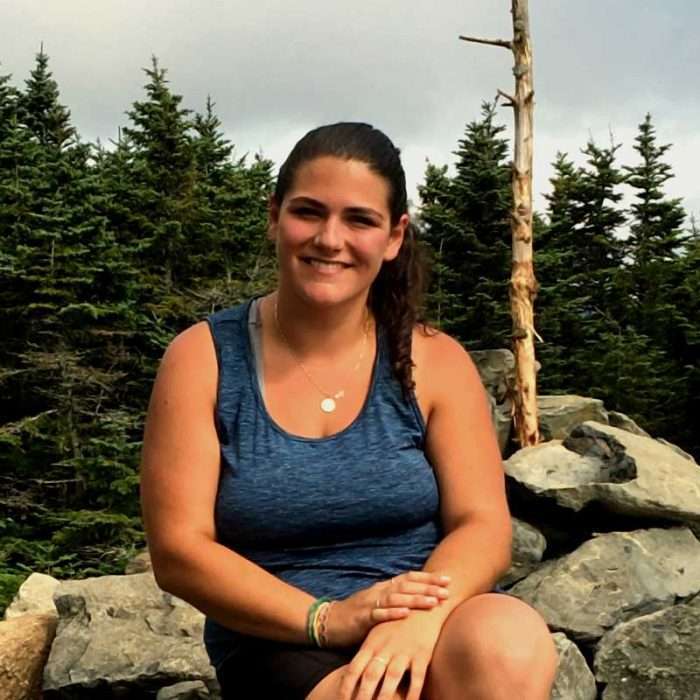
April Brightman
April is an adventure lover and freelance writer based in New England, with a passion for public lands, wild places, and all things outdoors. She loves camping in any form and spends as many weekends as she can hiking New Hampshire’s highest peaks, or road-tripping with her sweet dog Marley. If not in the mountains, you can find her planning her next expedition or caring for one of her far-too-many-houseplants.
Favorite outdoor adventure: National Parks Hiking and Road Trips!
Read More Hiking Inspiration
- How To Keep Your Feet Warm During Winter Hikes
- Where to Find the Best Hikes in Belize
- The Ultimate 6-Day Croatia Hiking Itinerary, According to Hikers
- Our Ultimate Bucket List of the Best Hikes in Europe
- How Heavy Are Your Thoughts on Trail? Tips for Negative Thinking While Hiking
- Best Hiking Routes in Scotland for the Trailblazer
- What To Wear Hiking In Hot Weather
- How to Lace Boots For Hiking: 7 Pro Lacing Techniques
- How to Identify Poison Ivy (And How to Treat an Allergic Reaction)
- 5+ Amazing Things To Do While Visiting Slovenia


